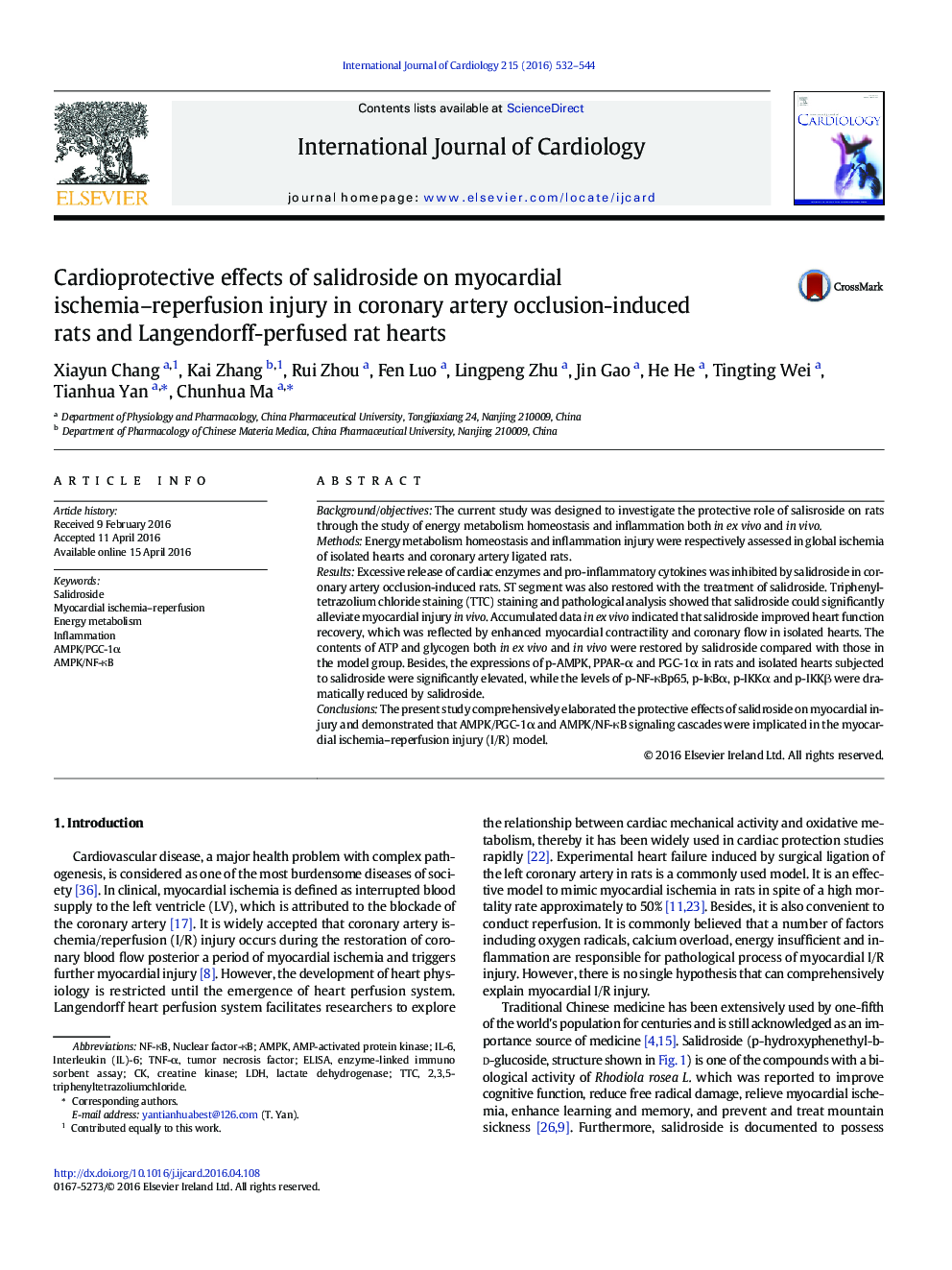| Article ID | Journal | Published Year | Pages | File Type |
|---|---|---|---|---|
| 5964008 | International Journal of Cardiology | 2016 | 13 Pages |
Background/objectivesThe current study was designed to investigate the protective role of salisroside on rats through the study of energy metabolism homeostasis and inflammation both in ex vivo and in vivo.MethodsEnergy metabolism homeostasis and inflammation injury were respectively assessed in global ischemia of isolated hearts and coronary artery ligated rats.ResultsExcessive release of cardiac enzymes and pro-inflammatory cytokines was inhibited by salidroside in coronary artery occlusion-induced rats. ST segment was also restored with the treatment of salidroside. Triphenyltetrazolium chloride staining (TTC) staining and pathological analysis showed that salidroside could significantly alleviate myocardial injury in vivo. Accumulated data in ex vivo indicated that salidroside improved heart function recovery, which was reflected by enhanced myocardial contractility and coronary flow in isolated hearts. The contents of ATP and glycogen both in ex vivo and in vivo were restored by salidroside compared with those in the model group. Besides, the expressions of p-AMPK, PPAR-α and PGC-1α in rats and isolated hearts subjected to salidroside were significantly elevated, while the levels of p-NF-κBp65, p-IκBα, p-IKKα and p-IKKβ were dramatically reduced by salidroside.ConclusionsThe present study comprehensively elaborated the protective effects of salidroside on myocardial injury and demonstrated that AMPK/PGC-1α and AMPK/NF-κB signaling cascades were implicated in the myocardial ischemia-reperfusion injury (I/R) model.
